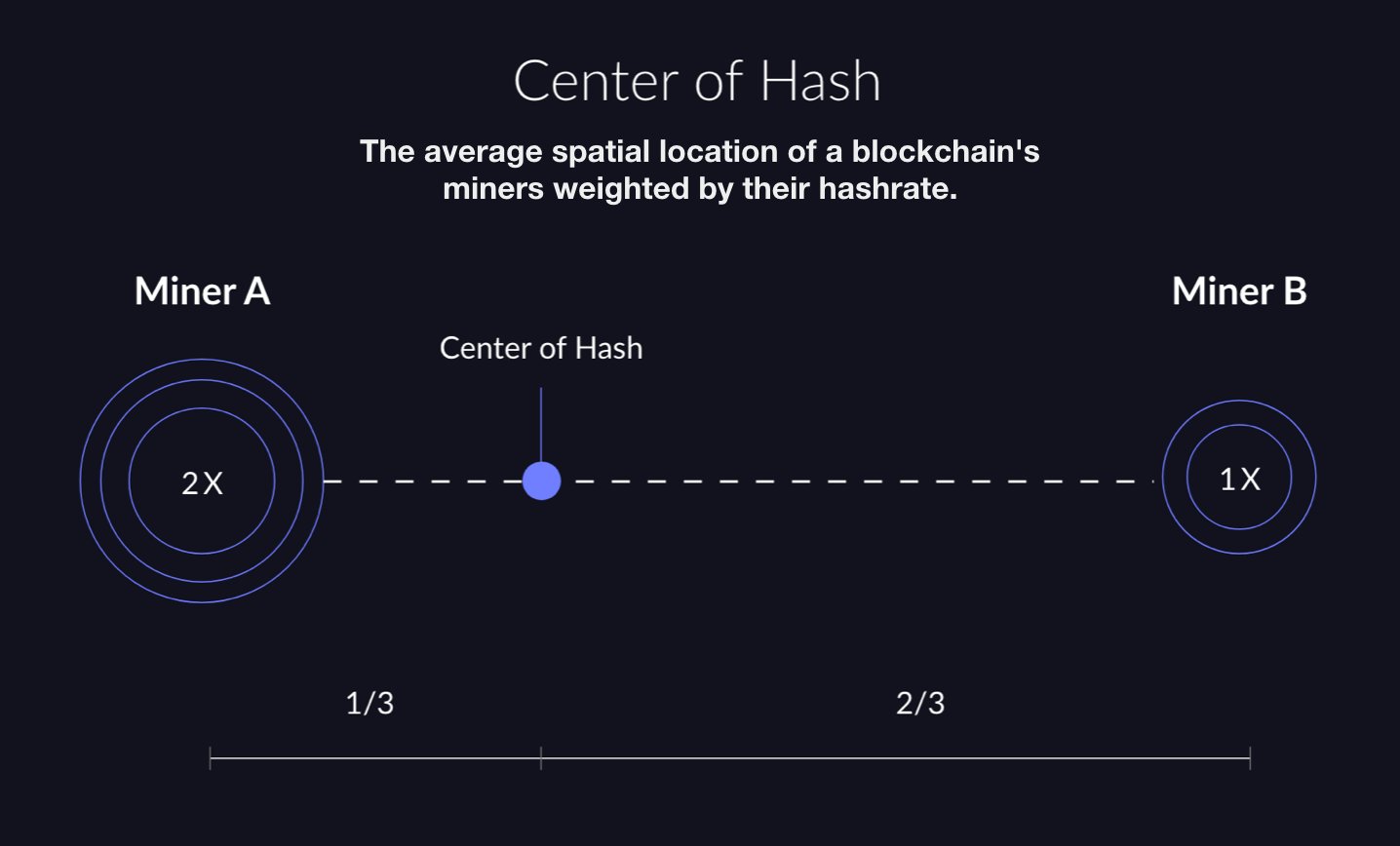While Bitcoin is just information, there are real physical limits that all decentralized systems will run in to.
One limit is the speed of light and thus the time window in which consensus can be reached.

It takes information about 42ms to travel from one end of the earth to the other end (in the best case).
Relativistic effects make global consensus below this time window impossible. Universal time does not exist.

This short video explains it well in under 2 minutes. It’s not only about light, though, it is about information - no information can propagate faster than the speed of light. This is even true when taking quantum entanglement into account.
Bitcoin solves this problem by slowing down time via proof-of-work. One tick of Bitcoin’s internal clock corresponds to ~10min of earth time, which is a large enough time window to find consensus, even if communication is a bit slow or unreliable.
| Clock | Tick Frequency |
|---|---|
| Grandfather’s clock | ~0.5 Hz |
| Metronome | ~0.67 Hz to ~4.67 Hz |
| Quartz watch | 32768 Hz |
| Caesium-133 atomic clock | 9,192,631,770 Hz |
| Bitcoin | 1 block (0.00000192901 Hz* to ∞ Hz**) |
* first block (6 days)
** timestamps between blocks can show a negative delta
The problem of telling time is also what creates real spacial limitations. Unfortunately, we can’t bring Bitcoin with us to the stars, we would have to start a new center of hash on the multi-generational starship (unless we all go). (h/t Dhruv Bansal)

If a project is truly decentralized it must not have a central keeper of time.
Our relativistic universe makes solving this problem extremely difficult, especially in a trustless, open, and adversarial environment.
PoW is probably the only solution.
🧡
Found this valuable? Don't have sats to spare? Consider sharing it, translating it, or remixing it.Confused? Learn more about the V4V concept.